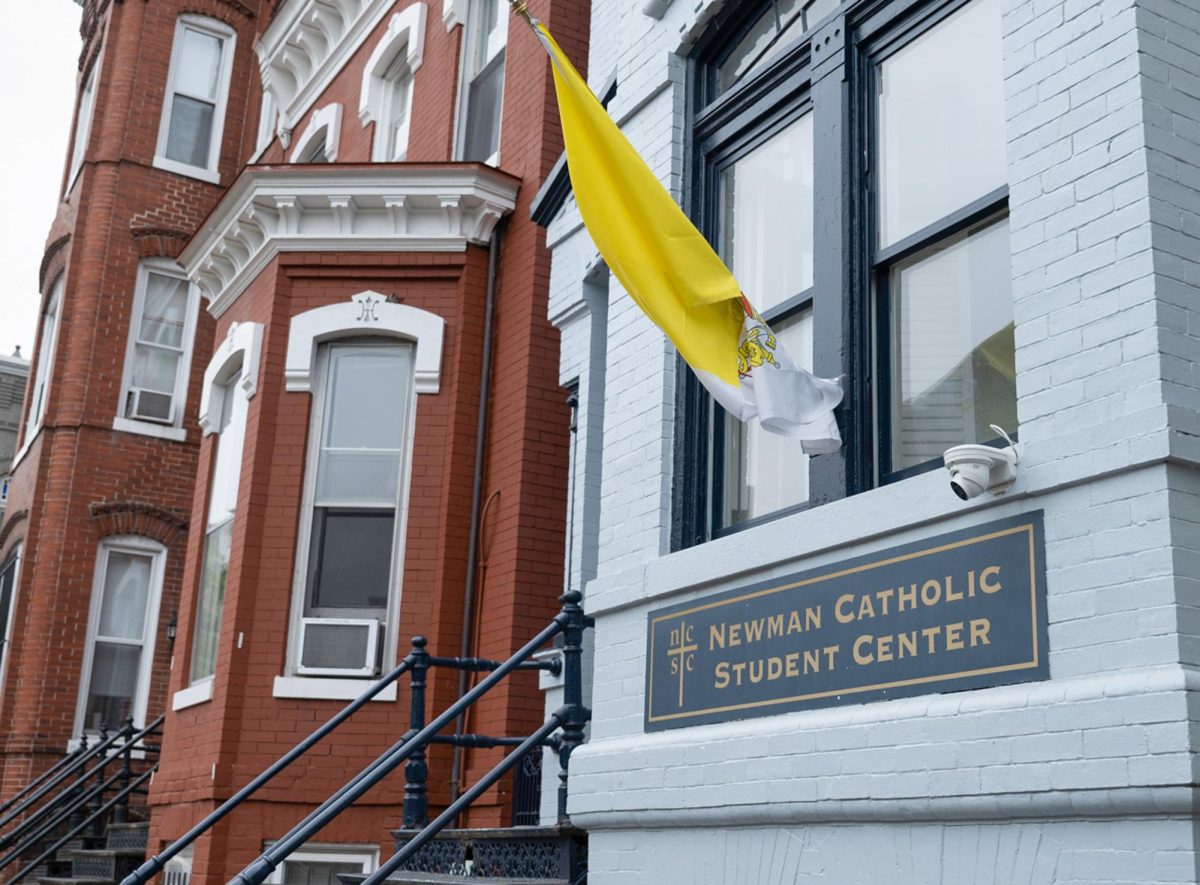When walking through Kogan Plaza, you may notice a cement plaque among the planted greenery and brick paths. It reads, somewhat illegibly, “Free Mandela.”
Officially known as the Nelson Mandela Historic Sidewalk Slab, the block of cement is “a tribute to our students’ passion for justice,” Assistant Vice President for District of Columbia Relations and professor of African-American history Bernard Demczuk said. He said the slab was the result of years of struggle between South Africa and the U.S. during an era of change.
Created by students in 1985, the plaque has existed longer than Kogan Plaza itself.
“There was an alleyway, and the alley was the loading dock to Lisner. And they were laying fresh cement, and our students, an evening after the cement masons left, tagged the fresh cement with ‘Free Mandela,’ ” Demczuk said.
To honor those students, former University President Stephen Joel Trachtenberg preserved the sidewalk slab when the alleyway transformed into Kogan Plaza in 1999, citing it as a symbol of the student body’s commitment to political and social justice.
During the early to mid 1980s, Congress appealed to President Reagan with hopes of ending apartheid in South Africa and releasing Nelson Mandela from jail.
The government’s calls for support from the public echoed among GW students, and Demczuk said many were arrested over the course of the year for protesting outside the country’s embassy.
“This wasn’t just a bunch of long-haired, crazy GW students deciding to get arrested or deciding to write something in the cement, this was an international crisis for the South African government,” Demczuk said.







